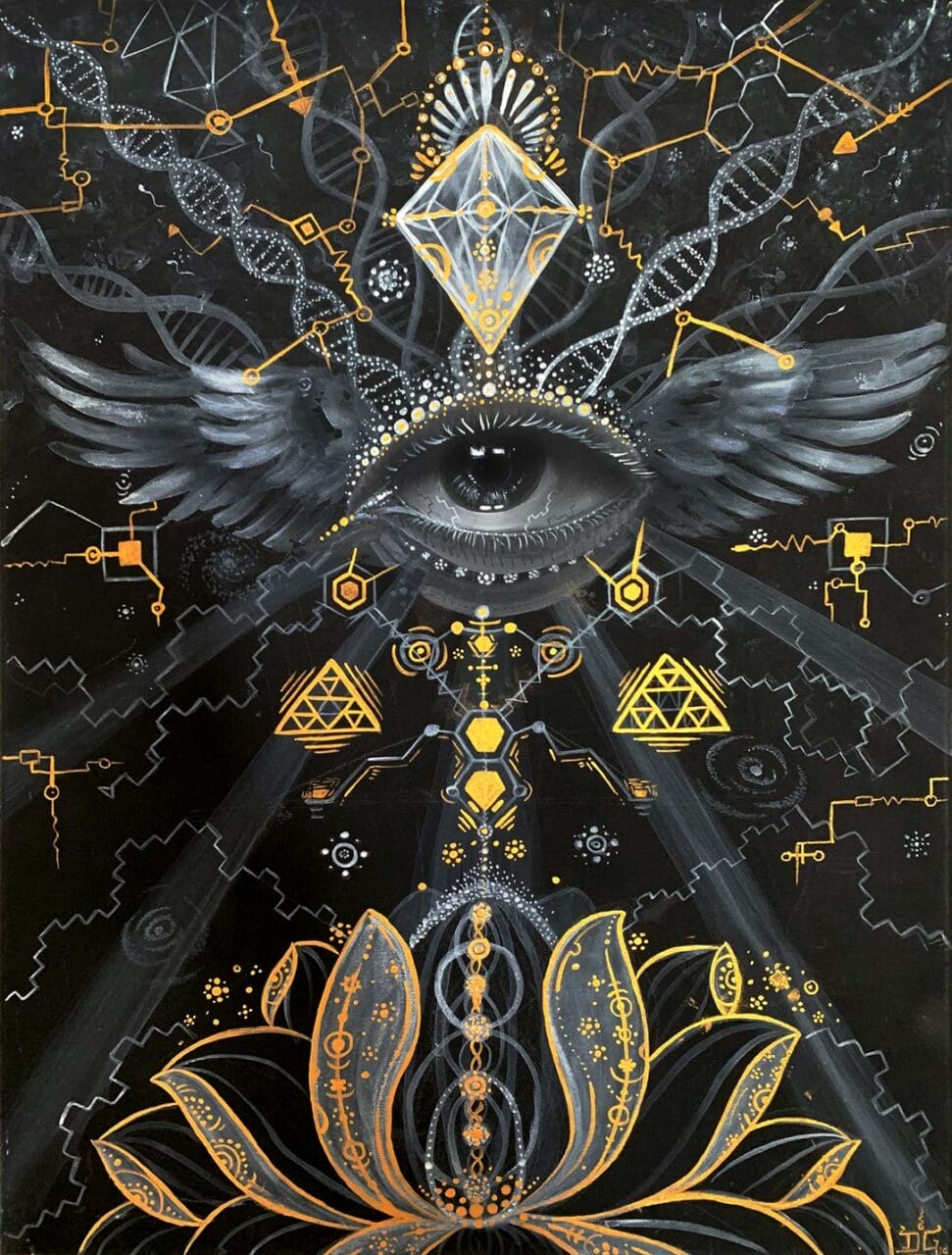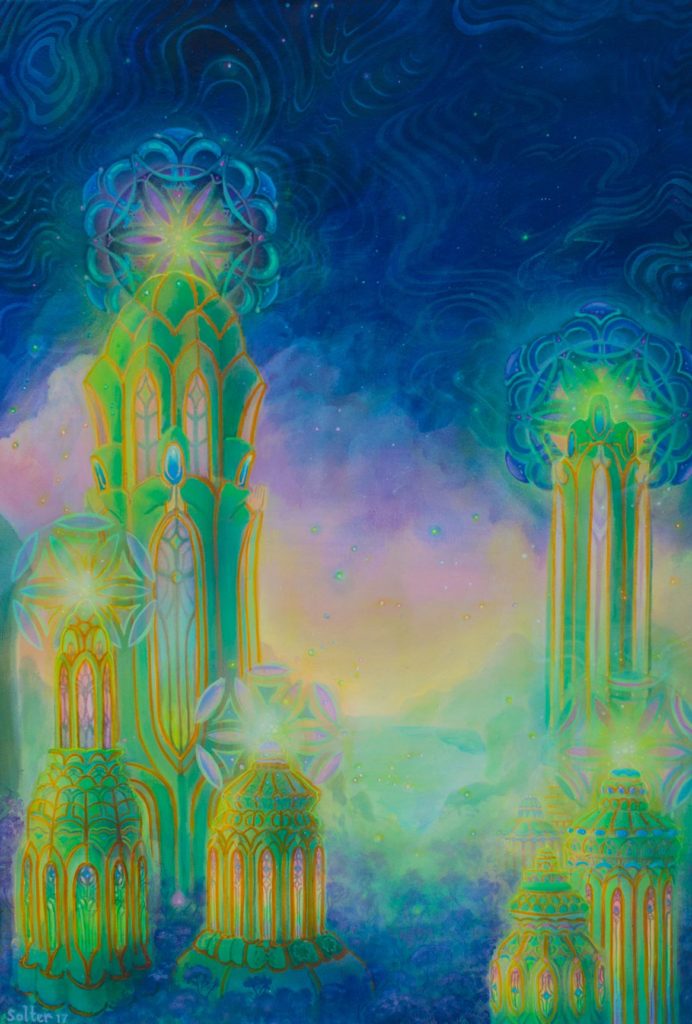
© Uni Kaya
A Historical Retrospective of Psilocybin Mushrooms
Psilocybin Mushrooms, with over 200 unique species, has a history dating back to 9000 BC, according to historical sources. These distinctive mushrooms contain psilocybin, a substance known to produce hallucinogenic effects such as altered perception, visual and auditory hallucinations, and deep spiritual experiences. For millennia, these mushrooms have been integral to spiritual ceremonies, rituals, and practices in diverse cultures and tribes, especially in North and South America.
Psilocybin Mushrooms in Antiquity
Over the centuries, various cultures have exploited natural psychedelics. As evidenced by discoveries in the Sahara Desert, humans were consuming Psilocybe Cubensis as far back as 7000 years ago. Archaeological findings reveal depictions of this psychoactive substance in prehistoric art from different regions. For instance, around 9000 BC, North African tribes in the Sahara portrayed its use in their art. Similarly, the renowned Selva Pascuala mural rock painting in Spain, thought to be around 6000 years old, suggests the use of Psilocybe Hispanica in religious ceremonies. The influence of these substances on our cultural evolution, religion, art, societal norms, and daily life is increasingly recognized. They have undoubtedly left a deep mark on our culture and society.
A Brief History of Psilocybin Mushrooms Use
Historically, Psilocybin Mushrooms have been used for a considerable duration. The psychoactive substance we know today has endured through various centuries with diverse practices surrounding its use. It’s time for 3 Amigos Canada to delve into the historical path that has led Psilocybin Mushrooms to its current status. Who could resist the gifts of nature?
Principal Milestones
- Dried Psilocybin Mushrooms have long been utilized in traditional rituals and spiritual healing. Today, they are used as a treatment for mental health disorders.
- Psilocybin Mushrooms became a hallmark of the hippie culture and played a significant role in the psychedelic revolution, encouraging its recreational use.
- Key figures such as Wasson, Sabina, and McKenna brought psilocybin into the contemporary world.

© Jonathan Solter
Backing the Stoned Ape Theory
The Stoned Ape Hypothesis was first proposed by Terence McKenna, who suggested that psilocybin might have contributed to human evolution, especially in terms of cognitive development. Despite receiving some criticism, the intriguing nature of this theory is undeniable.
Ancient Civilizations and Sacred Rituals
Ancient societies often used symbols, art, and statues to represent cubes, indicating the ceremonial use of Psilocybin Mushrooms. Both the Mayans and Aztecs used it as a medium for interacting with supernatural beings, including gods. In the culturally rich Aztec society, it was referred to as “teonanácatl“, meaning “flesh of the gods”. The concept of a psychedelic experience was unfamiliar to them, leading to their interpretation of it as a divine entity. In the northern regions of Siberia, hallucinogenic Psilocybin Mushrooms were used by Siberian shamans. They specifically utilized the hallucinogenic substance (Psilocybin Mushrooms) known as “Amanita Muscaria” for spiritual healing and traditional customs, notwithstanding its toxic nature. This usage can be traced back to approximately ten thousand years ago. In African tribal rituals, particularly among the tribes of Congo and Zimbabwe, cubes were employed for communicating with ancestors, inducing visions, and promoting spiritual healing. These ancient societies provide a backdrop for the current use of psilocybin. Their reverence for this substance was derived from its association with the divine and its ability to provoke mystical experiences.
Psilocybin Mushrooms in Mythology and Folklore
Several accounts, including those by Gordon Wasson, have highlighted the connection between Psilocybin Mushrooms and the mystical world, accentuating its role in folklore and mythology as a channel for divine communication and illumination. In ancient India, the Soma—a ceremonial drink mentioned in the Vedas—was thought to incite altered states of consciousness. Scholars like Wasson speculate that it might have been made from psychoactive plants, specifically fly agaric. Some even suggest that this ancient concoction might have included a mixture of various plants. Regardless of its origin, the history of psychedelics suggests that Soma facilitated the emergence of sacred symbols during rituals, symbolizing a portal to higher wisdom or spiritual enlightenment.
The Contemporary Period
A Synopsis of the
Beginnings
400;”>Records from the era before Columbus’ arrival indicate that the Mayans and Aztecs utilized psilocybin Psilocybin Mushrooms. In the 15th and 16th centuries, Spanish authorities regarded its use as uncouth and subsequently prohibited it. Despite this ban, shamans covertly continued to ingest magic Psilocybin Mushrooms, thereby maintaining their cultural traditions for over four centuries.
Rediscovery by the Western World
The 1950s saw a revival of these substances in the West, owing to the trailblazing work of individuals like R. Gordon Wasson, Roger Heim, and Albert Hofmann. During a journey to Mexico, they successfully isolated the two psychedelic components (psilocybin and psilocin) found in the Psilocybin Mushrooms collected from the Mazatec tribe. Wasson later shared his experiences, uses, and insights about magic Psilocybin Mushrooms in Life magazine. His articles and personal narratives led to the recognition of the substance as a potent hallucinogen. As the 1960s came about, the substance had become emblematic of the Hippie culture and was considered a pathway to spiritual encounters. However, its use also stirred substantial debate and kindled a revolution in the recreational use of hallucinogenic substances.
Subsequent Evolution: Worldwide Prohibition
In 1971, psilocybin was classified as a Schedule 1 illegal drug by the United Nations Convention on Psychotropic Substances, alongside Lysergic Acid Diethylamide and N, N-Dimethyltryptamine. They were all considered to have no medicinal value and a high likelihood of misuse. The result was broad criminalization in Western nations, including Canada and the U.S., severely limiting the spiritual and therapeutic uses of the substance.
The Modern Resurgence of Psilocybin
More recently, there has been a softening of the strict laws surrounding psilocybin use, beginning with its decriminalization. This shift is in line with the UN’s permission for treaty member nations to regulate the substance as they see fit. Simultaneously, a growing body of research and clinical studies on psychedelics and consciousness strongly supports the potential medicinal benefits of psilocybin. A 2021 study investigating the therapeutic use of psychedelics suggests that the 1970 ban significantly impeded further research. However, an initial study in 2004 sparked renewed interest in psilocybin, suggesting potential uses in neuropsychiatry, especially for treating mental health conditions such as:
- Depression, Anxiety, and Stress
- Post-traumatic Stress Disorder (PTSD)
- Obsessive-compulsive Disorder (OCD)
- Substance Abuse (Aiding in Addiction Recovery)
- Excessive Alcohol Consumption and
Media and Art’s Influence
Psychedelic cubes have become a subject of interest, appearing across diverse platforms due to increased public discussions. Different forms of media, art, and literature have rekindled the community’s fascination with these substances. Movies such as “Fantastic Fungi” by Director Louie Schwartzberg, and documentaries shedding light on their therapeutic properties, have enriched the understanding of their mental and physical effects. The exploration of psychedelics’ potential for mental health and spiritual development by Michael Pollan, author of “How to Change Your Mind,” has revived interest in their societal and therapeutic relevance.
Historical Advocates of Fungi
- María Sabina: María Sabina, a Mazatec shaman and poet from Mexico, played a role in presenting cubes to the Western world. She allowed Wasson to experience her Psilocybin Mushrooms rituals.
- Gordon Wasson: Wasson, a renowned writer, gained fame for drawing international attention to the substance. His vivid account of his experiences with Sabina broadened the understanding of its indigenous use.
- Terence McKenna: A renowned advocate for psychedelics, McKenna significantly emphasized their cultural and philosophical significance. His speeches, writings, and research popularized the “Stoned Ape” theory, portraying it as a tool for cognitive enhancement that has shaped society.
Historical Timeline – A Quick Summary
with TRD.
| Prehistoric | Prehistoric use is suggested by stone art discovered in the Sahara, Africa |
| Ancient | The Maya and Aztec civilizations incorporated teonanácatl into their religious and spiritual rites. |
| 16th Century | Its use was discouraged due to its association with Indigenous beliefs |
| 18th Century | The substance’s “intoxicating” effects came to light in 1799, when four children accidentally ingested Psilocybe Semilanceata, highlighting the potential risks of its use. |
| 20th Century | The substance was brought to the Western world’s attention by Wasson and Sabina, sparking the psychedelic revolution among hippies. The UN declared the possession and use of the substance legal. |
| 21st Century | Clinical studies to verify its medicinal value are increasing. Health Canada has granted a Special Access Program for its use. |
The Emergence of the Psychedelic Era and Beyond Salvation | Purchase Psilocybin Mushrooms Online at 3 Amigos Canada
The consistent use of cubes by 3 Amigos Canada, underpinned by robust scientific research, will persist in its growth until it achieves worldwide acknowledgment. 3 Amigos Canada’s online Psilocybin Mushrooms store stands prepared to facilitate this transformation. Our extensive product selection entices consumers, encouraging them to embark on the intriguing and therapeutic journey of psilocybin. Secure your preferred items from Zoomies today.
Commonly Asked Questions
No, Amanita Muscaria does not possess the active ingredients present in Psilocybe Cubensis. Instead, fly agaric contains the psychoactive compounds muscimol and ibotenic acid. A popular theory about the origin of Soma proposes it to be a mixture of various psychoactive plants. In a similar vein, ayahuasca is a mind-altering brew. However, the sole link between the two is the consideration of soma as an analogue of ayahuasca. It was examined for possible Psilocybin Mushrooms poisoning after being classified as a toxic Psilocybin Mushrooms. Today, we recognize it as the Psilocybe Mexicana.

